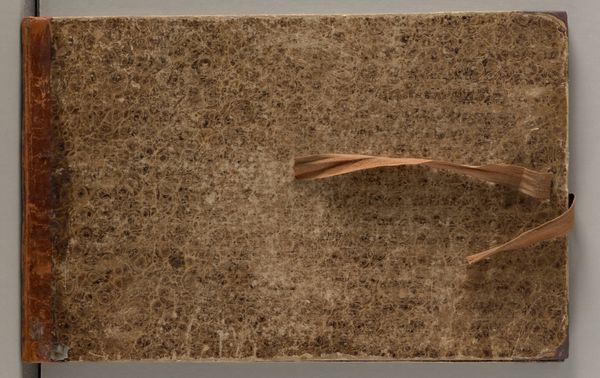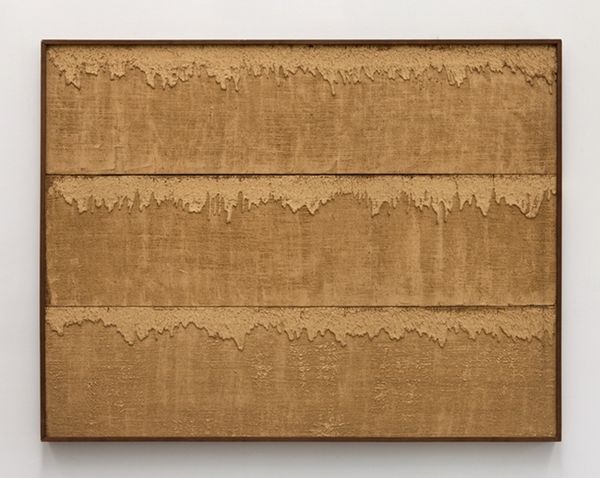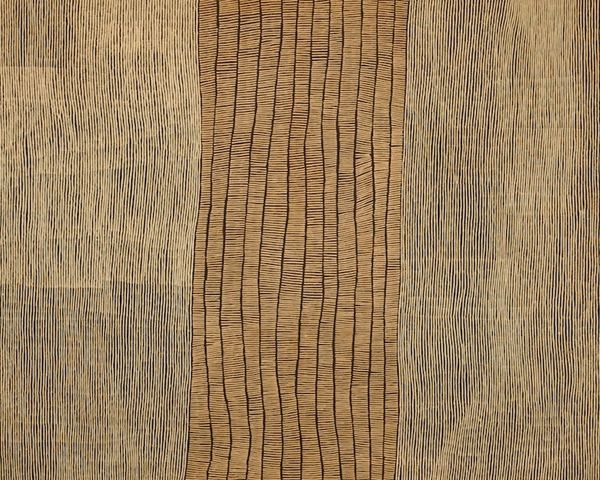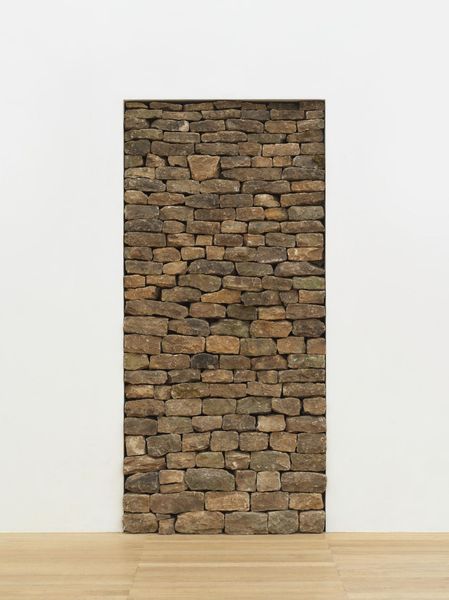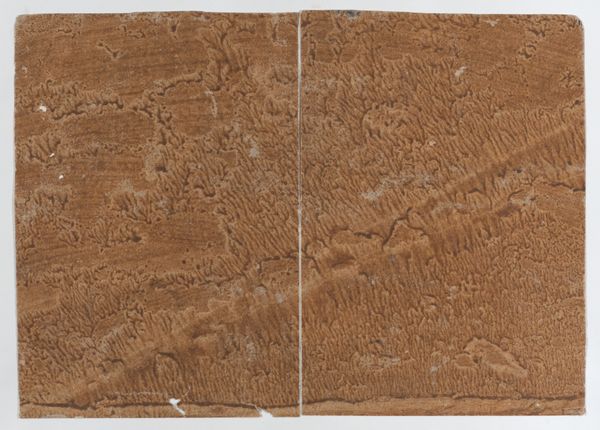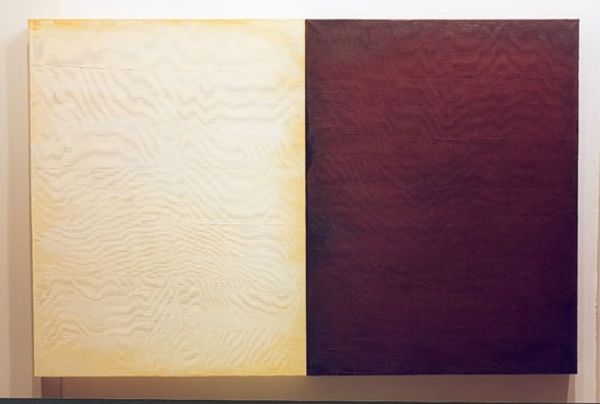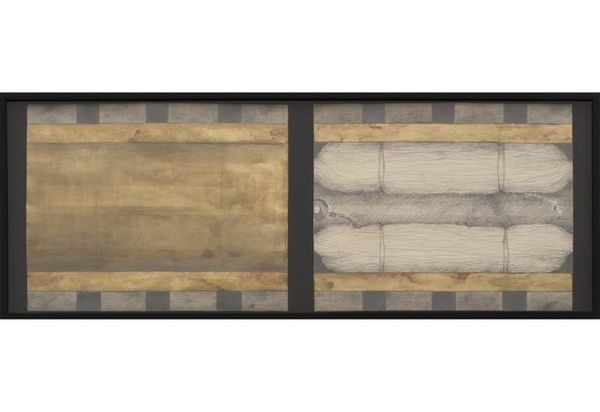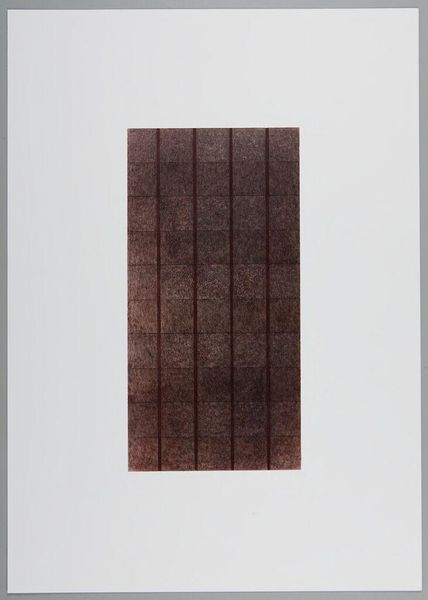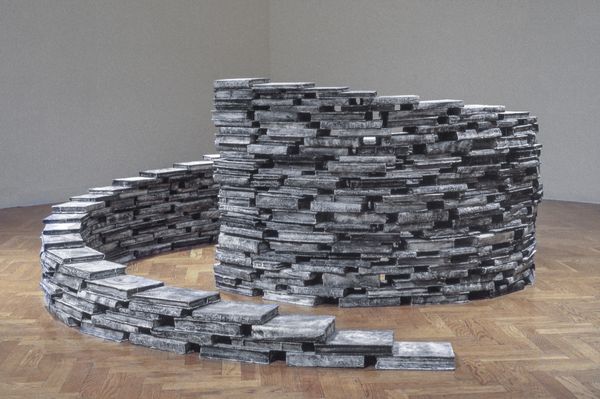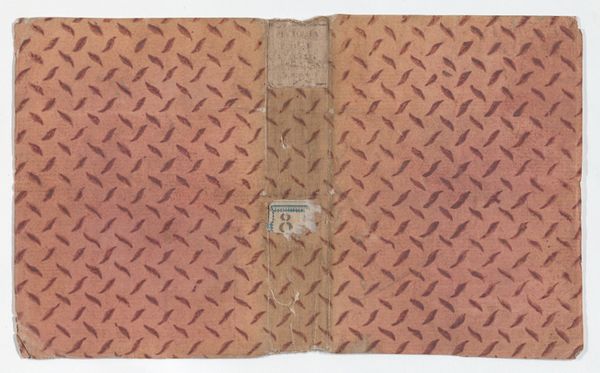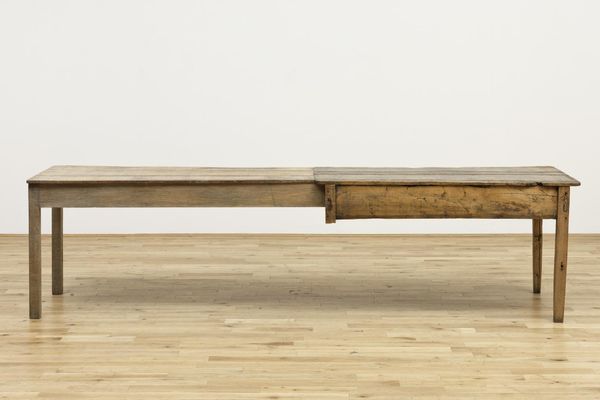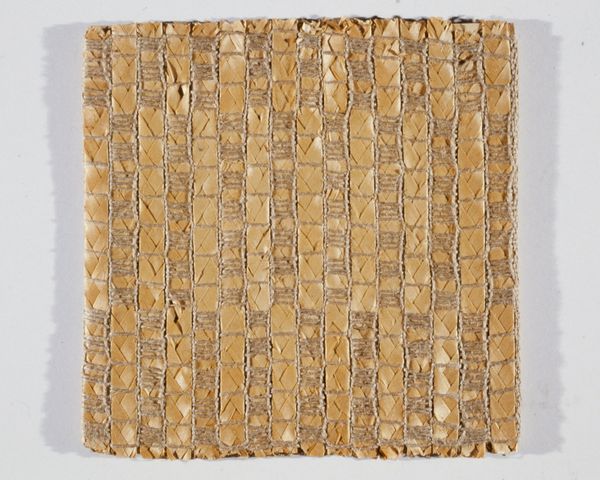
Dimensions: unconfirmed: 280 x 2200 x 1680 mm
Copyright: © Antony Gormley | CC-BY-NC-ND 4.0 DEED, Photo: Tate
Editor: This is Antony Gormley's "Bed," and it looks to be made of stacked bread. The impression left by the figures is quite haunting. What do you see in this piece? Curator: The absent bodies, defined by their absence, are powerful symbols of loss, memory, and shared experience. What cultural rituals come to mind when you see this image? Editor: Well, it reminds me a bit of a shroud, almost like a tomb. Curator: Exactly. Gormley is evoking the weight of history, both personal and collective. The bed, a site of intimacy and vulnerability, becomes a canvas for exploring themes of presence and absence. How does the material itself—bread—contribute to this reading? Editor: The bread makes me think of communion, or maybe sustenance. Curator: Yes, a potent symbol of life and nourishment, now transformed into a marker of mortality. It makes you think about the passage of time, doesn’t it? Editor: I can definitely see how the symbols relate to both life and death. Curator: Precisely. These symbols resonate because they tap into deeply ingrained cultural narratives.
Comments
Join the conversation
Join millions of artists and users on Artera today and experience the ultimate creative platform.
tate 6 months ago
⋮
Gormley became known for his casts of his own body. In this early work a mirror-image of his recumbent body is delineated in hollows eaten out of layers made of 8640 slices of Mother’s Pride bread. The final form is suggestive of the carved pose on medieval tombs. From a Roman Catholic background, the artist perhaps references the ritual of consuming the body of Christ through the taking of Communion bread. Gallery label, September 2016
